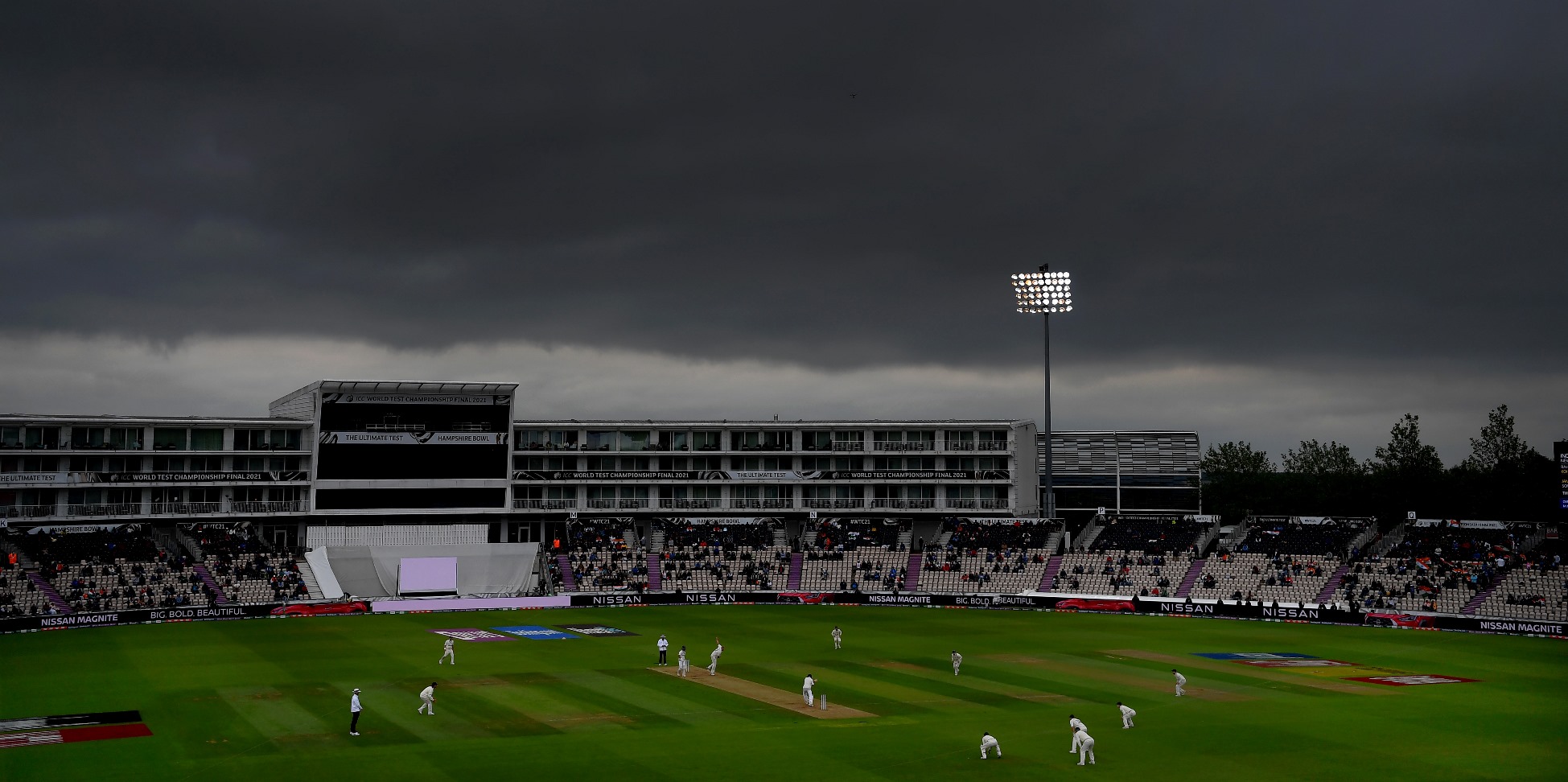
Play stopping due to bad light has been part of Test cricket since time immemorial. If natural light isn’t good enough to support play, the umpires have the power to call off proceedings as part of safety measures. This is necessary as the red ball used in Test cricket is extremely tough to spot under artificial lights.
On Day 2 of the World Test Championship (WTC) final between India and New Zealand, a similar thing was witnessed. The final session was curtailed owing to poor light and the umpires Richard Illingworth and Michael Gough had to call the day’s play off.
In the process of finding out if the light was suitable enough to play under, the umpires used a fancy device that was kept on top of the stumps which gives the reading of the current light conditions. This device – a ‘light meter’ – has a light sensor at one end and a screen at the other that will display the result.
The start of day three of the #WTC21 Final has been delayed due to a wet outfield.
There will be an inspection at 10:20 am local time. #INDvNZ pic.twitter.com/GqHvMtZ2u0
— ICC (@ICC) June 20, 2021
The Law regarding bad light
Marylebone Cricket Club (MCC) has a manual on this particular situation and it comes under law 3.6.3. The usage of the light meter is done as follows:
“Light meter readings may accordingly be used by the umpires: a) To determine whether there has been at any stage a deterioration or improvement in the light. b) As benchmarks for the remainder of a stoppage, match and/or series/event.”
Since typical English Summer weather usually constitutes overcast conditions and bouts of rain, most of the Tests played here are often subject to disruptions in play. Prior to 2010, this situation was dealt with by asking the opinion of the batsmen whether the light is good enough for them to play under. However, it provided unfair means for the batsmen to call off play if the situation was bad for the team.
Therefore, the light meters came into play. According to the law, the first reading on the device acts as the parameter for the rest of the readings. In other words, if the umpires feel that the light is too low at a particular reading, they use that reading for the rest of the match as a benchmark.
Also Read: Aakash Chopra suggests 10 laws that should be changed in cricket




![[WATCH]- Babar Azam Stunned As Aiden Markram’s Brilliant Catch Removes Him In SA vs PAK 2nd ODI](https://cricfit.com/wp-content/uploads/2024/12/IMG_2644-100x75.jpeg)

